PinotFile: 12.18 May 20, 2021
|
Privé Vineyard: Looking Back at the Legacy and Gazing Forward at the Bright Future
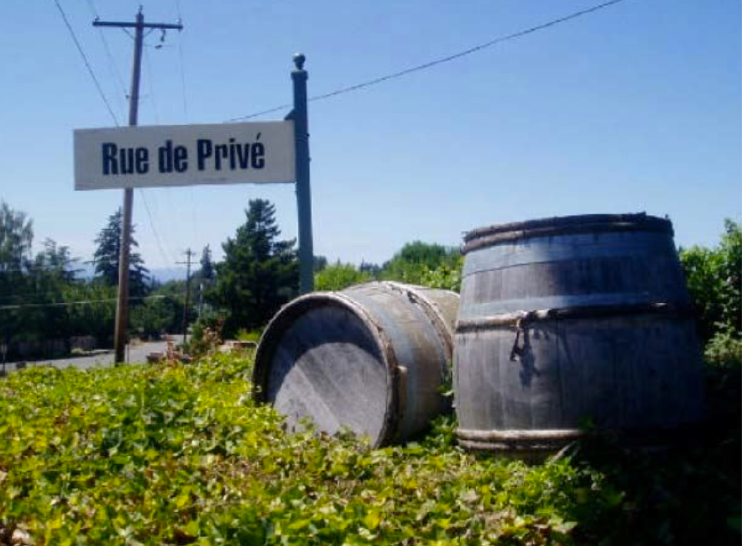 The couple manage the entire vineyard and winery operation with Mark stewarding the vineyard and Tina making the wines. The Hammonds joke that the division of labor is convenient because Mark can blame Tina and visa-versa if there is a problem with the outcome of the finished wine. Experienced pickers are hired at harvest, but otherwise, this is truly a family-run estate. Over the years the small production estate-grown wines (about 300 cases of Pinot Noir annually) of Privé Vineyard have been the closest thing Oregon has to a cult Pinot Noir. It is essentially a private winery for those lucky enough to be members of the winery’s allocation list. The original Müller-Thurgau vines on the property were planted in Jory volcanic soil in 1980 and grafted over to the Pommard clone of Pinot Noir by the Hammonds beginning in 1995 after they had acquired the vineyard. Grapes were sold initially to Patricia Green until the Privé Vineyard label was launched in 2001.The vines have been meticulously hand-farmed organically with a conscious effort to pull back vigor resulting in yields between 1.5 and 2 tons-per-acre. Four Pinot Noirs are produced, three of which are estate grown. ‘le nord’ is from the upper, northern one acre at 600 feet elevation, ‘le sud’ is from the lower elevation and southern one acre at 500 feet elevation, and a reserve bottling, ‘Joie de Vivre’ (Joy of Life) is a reserve wine crafted in half-barrel quantities and presented in a beautifully etched and signed bottle. The Joie de Vivre is only made from the first pressing from each bin of fermented wine based on the belief that the most intense flavors of a grape are next to the skin, and gentle pressing draws a juice that is slightly darker and more intense in flavor. A ‘Chehalem Mountains’ appellation bottling is a blend of grapes from several local Pinot Noir vineyards. This last offering was added to the lineup in 2009 as an everyday wine that could be offered to visitors to the winery since the estate Pinot Noirs sell out quickly every year. A few other varietals have been offered to supplement the winery’s income. Comparing le sud to le nord is a great lesson in terroir. A difference between le sud and le nord is evident in every vintage, independent of the differences in oak barrel regimen. Ripeness varies between le sud and le nord depending on the vintage and the character of the fruit (red versus dark red and black fruits) reflect this. Le sud tends to ripen faster and is picked at a slightly higher Brix, but in cooler vintages le nord ripens quicker and is picked at a higher Brix. Le sud is aged in 100% new French oak barrels as it is more cellar-worthy, while le nord is aged in a combination of new (25%), 1, 2 and 3-year-old French oak barrels. Tina likes to joke that if a miserable vintage resulted at Privé Vineyard, Mark would have to get a real job. They kid each other about what each one would do. Mark thinks he might pump gas (required by gas station employees in Oregon) since he loves working outdoors. Tina is a self-taught winemaker who has a knack for crafting Pinot Noir. In the winery, grapes are carefully sorted by hand and 100% de-stemmed (not crushed). The grapes are whole berry fermented after a 5-day cold soak in a 1.25-ton open-top bin. Aging is carried out in Seguin Moreau French oak barrels. The winemaking is consistent with the Pinot Noir wines exhibiting finesse, balance, soft tannins, admirable oak integration, and age-ability. the moderate alcohols in most vintages add to their appeal. The Hammonds utilized a tiny winery for years that suited their very small production. A new and larger winery designed and largely built by Mark opened in 2015 and the previous winery was converted into a tasting room and hospitality center.
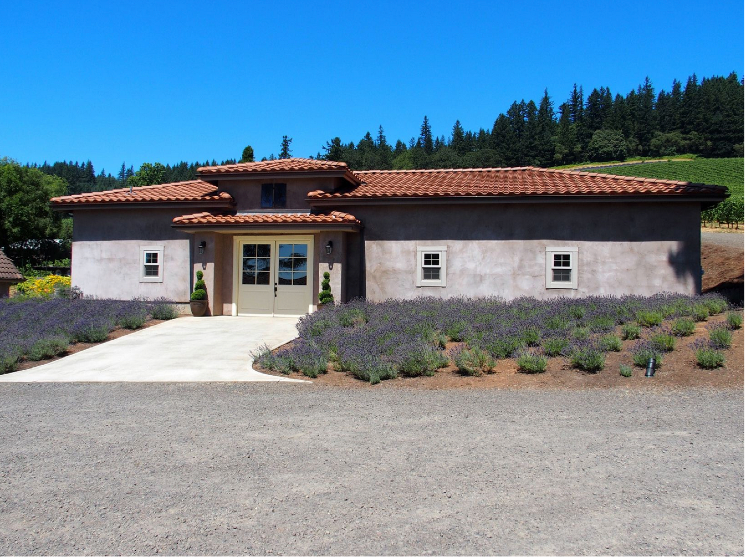 The Hammonds decided to sell their vineyard and winery in 2018 and after an intensive search, Tina notified me in November 2020 that they had found a successor. Tina remarked, “We finally found the perfect person to take the baton and our hope is that she will take Privé to new heights. She is an accomplished young lady by the name of Piper Underbrink. The deal closed on October 20, 2020. We have agreed to spend one year mentoring and after that year possibly continue as consultants. Her intention is to keep all things consistent.” She has promised to honor and preserve the passionate work and style developed over the years by the Hammonds. The photo below in front of the original winery left to right: Piper, Mark, and Tina.
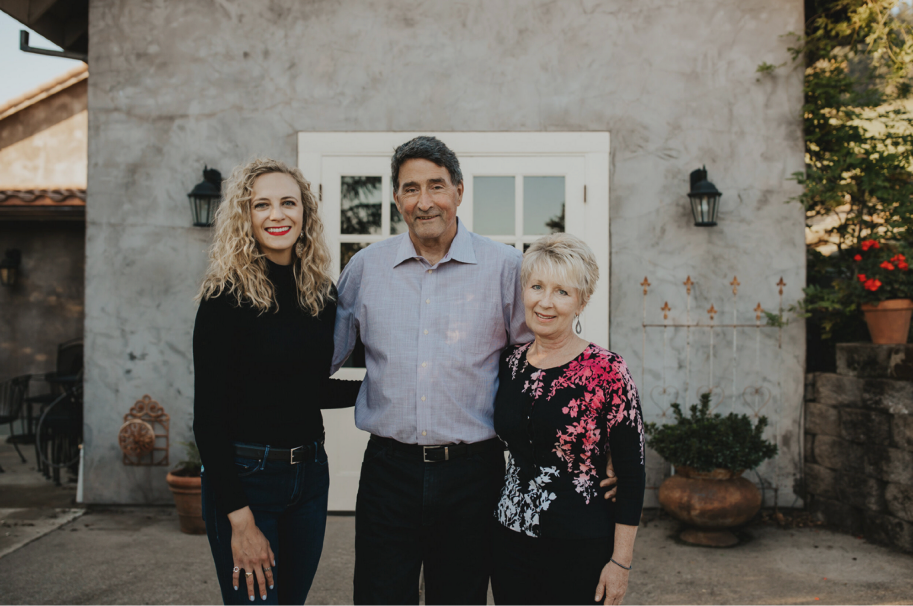 Tastings continue to be private by appointment (minimum order commitment of six bottles). Magnums of the Estate Pinot Noir wines are available. For more information and to join the Privé Wine Club allocation list, visit www.privevineyard.com. There is a waitlist to join the new member list. The 2020 vintage offering for wine club members was in January 2021 on a first-come basis. This vintage was crafted by both Tina and Piper. Although there were wildfires in the Chehalem Mountains in 2020, Piper told me that their vineyard was spared of any smoke taint. However, very low yields resulted as a result of uncharacteristic rain at bloom in June and there will be a very limited amount of wine released from the 2020 vintage. Through the years, Privé Vineyard Pinot Noir has often appeared on my end-of-the-year All American Pinot Noir list. I have reviewed multiple bottlings for the PinotFile since the 2003 vintage. In this issue, I present short reviews of many past vintages that I have pulled from my cellar and enjoyed over the last few months looking back as a homage to the Hammonds legacy. I also offer reviews looking forward of three of the 2019 vintage Pinot Noirs. When you talk of passion for crafting Pinot Noir, quality of life and carving out a little niche of heaven, the Hammonds found it. Privé Vineyard has been their answer to Pinot Noir’s elusive romance.
2011 Privé le sud Chehalem Mountains Pinot Noir 13.2% alc. · Surprisingly enjoyable wine from a vintage that was complicated by a cool and wet spring to mid-summer. Bloom in the Willamette Valley was in July! September was relatively dry to the fruit did ripen and some referred to a “miracle harvest.” Light in weight and very elegant in character featuring fresh, bright red fruit aromas and flavors. Gossamer tannins, a shadow of oak and a modest finish There is a personality to every vintage and this wine embodies a survivor. Score: 91
2012 Privé le sud Chehalem Mountains Pinot Noir 13.8% alc. · Dark garnet in color and moderately bold in style, with benevolent aromas and flavors of darker fruits augmented with a sidekick of spice and mocha. Very sleek and polished on the palate, with an glorious finish like a 3 hour movie you don’t want to end. Drink now at the wine’s apogee. This wine was reviewed in December 2013 and referred to as orgasmic. Still is. Score: 98
2013 Privé le sud Chehalem Mountains Pinot Noir 12.9% alc. · Solid, but not special, offering aromas of red berries, dried herbs and subtle oak. Light in weight and color, with flavors of juicy red cherry and berry with a slight herbaceous tone. More fruit and spice elements appear with time in the glass. May not have been a pristine bottle. (See my comments about this vintage for the 2013 Joie de Vivre) Score: 89
2017 Privé le sud Chehalem Mountains Pinot Noir 13.8% alc. · Moderately light garnet color in the glass. Joyous aromas of dark cherry, earthy flora and oak-driven toast. Sensuous and feminine in style, with a core of black cherry and marionberry fruit flavors dressed by a modicum of oak. Even more appealing when tasted the following day from a previously opened and re-corked bottle predicting age-ability. Score: 92
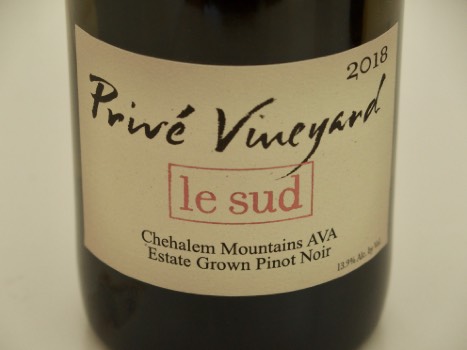 2018 Privé le sud Chehalem Mountains Pinot Noir 13.9% alc. · Moderate garnet color in the glass. A bit of oak-driven mocha aroma and flavor on opening dissipates completely by the following day. Love the aromas of black cherry and Dr. Pepper. Very sleek in the mouth with elegant power, offering voluptuous flavors of black cherry and ripe strawberry, framed by gentle tannins. The dark cherry hangs around on the finish for what seems like a minute. Great in every way when tasted the following day from a previously opened bottle. Two bottles tasted on different occasions with consistent results. Score: 96
2011 Privé le nord Chehalem Mountains Pinot Noir 13.0% alc. · Lighter garnet color in the glass. The wine is on the lean side, offering an array of demure red fruit aromas and flavors. The barrel treatment is overbearing and dominates the delicate fruit core that seems faded. Not as successful as le sud in this challenging vintage. Score: 88
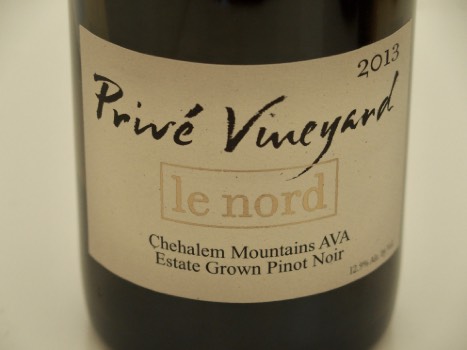 2013 Privé le nord Chehalem Mountains Pinot Noir 12.9% alc. · Soaring aromas of blackberry and spice echoed on the palate in an elegantly styled, delicious wine. The nose is amazingly captivating. A superb wine in every way that has gained in weight and length since last tasted in January 2015. If you have any of this wine in your cellar, pop the cork, for this is a spellbinding wine that wears its age like a badge. (see my comments about this vintage for the 213 Joie de Vivre) Score: 98
2014 Privé le nord Chehalem Mountains Pinot Noir 13.8% alc. · Moderately light garnet color in the glass. The aromas of cherry and spice are fresh as can be. A charge of cherries jubilee impresses the palate. Great harmony here, the Pommard-driven cherry goodness lasting for what seems like a minute. Even better when tasted the following day from a previously opened bottle indicating this is a 15-year wine at least. Score: 96
2017 Privé le nord Chehalem Mountains Pinot Noir 13.8% alc. · Pleasing aromas and flavors of dark Bing cherry with a dusting of oak. Silky in the mouth with inviting elegance, offering good cherry-driven length on the palate and on the finish. May need a few more lengths for optimum enjoyment. Fine, but not exceptional. Score: 92
2018 Privé le nord Chehalem Mountains Pinot Noir 13.8% alc. · Moderate garnet color in the glass. Darker and riper fruits are featured compared to le sud in this vintage. Aromas and flavors of black cherry and black berry that entice over time in the glass. Well-proportioned tannins and acidity add harmony and the finish goes on and on. Superb when tasted the next day from a previously opened bottle. Score: 95
2005 Privé Joie de Vivre Yamhill County Willamette Valley Pinot Noir 13.0% alc., 132 bottles. · Good color, black cherry and spicy oak (a subtle hint of Brettanomyces). Mid-weight, with a a core of black cherry fruit, dark chocolate and smoky oak. Silky in texture and persistent in length. This wine has aged beautifully and is surprisingly very drinkable at 16 years of age. Score: 91
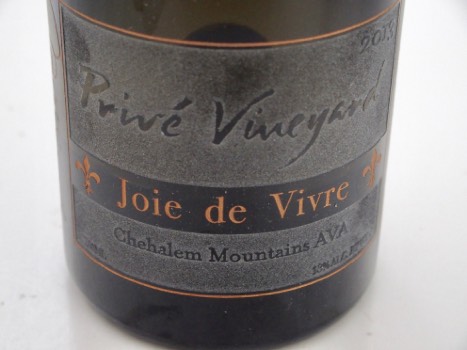 2013 Privé Joie de Vivre Chehalem Mountains Pinot Noir 13.0% alc. · A bombastic wine that is superb in every way. Strikingly elegant yet offering waves of black cherry goodness. An incredible wine from a vintage that was not highly lauded. The growing season was warm and late summer brought monsoon-like rains to the Willamette Valley. Some vineyards in the Chehalem Mountains received 7 inches of rain in September. After the rains, the weather remained cool and dry and some resilient grapes were harvested. Accomplished producers vinify special wines in most every vintage. This wine is a testament to the importance of paying more attention to the producer than the vintage. Score: 97
2017 Privé Joie de Vivre Chehalem Mountains Pinot Noir 13.8% alc., 300 bottles. · A lighter wine in this vintage, but plenty of oak-kissed red cherry and spice aromas and flavors. Very seductive in demeanor with a finish that won’t quit. Considerably more giving when tasted the following day from a previously opened and recorked bottle predicting a long life ahead for this wine. Score: 93
2018 Privé Joie de Vivre Chehalem Mountains Pinot Noir 13.9% alc., 288 bottles. · An excellent young wine from one of the best vintages of the decade. Moderate garnet in color, with penetrating aromas of cherry, spice and rose petal infused with a compliment of oak. Gracious and satisfying on the palate with plenty of black cherry goodness. Impeccably balanced with a ridiculously long finish. This wine is impressively open and giving at such a young age. The wine was retasted December 31, 2021, 7 months after the previous tasting and was one of my most memorable drinking experiences of 2021. The wine was beautifully composed with a core of gorgeous black cherry goodness, perfect harmony and a finish that would not quit. It was extraordinary when tasted the following day from a previously opened bottle indicating a long life ahead. Score: 95/99
2019 Privé Chehalem Mountains Pinot Noir 13.5% alc., $55. · Dark garnet color in the glass. Well-ripened fruit aromas of blackberry and boysenberry. There is a hint of VA. Mid-weight plus and fruit-driven in style, offering flavors of blackberry and cassis with subtle floral, spice, earth and oak notes framed by nubile tannins. The finish offers good juiciness and modest length. This wine pushes the ripeness envelope. Score: 88
2019 Privé le sud Estate Chehalem Mountains Pinot Noir 13.5% alc., $75. · Moderately dark garnet color in the glass. Nicely perfumed with aromas of wild blackberry, earthy flora and a touch of oak spice. Mid-weight in style, with a core of earth-kissed purple and black berry fruits that persist through a very long finish. Wellintegrated tannins and complimentary acidity. There is a very subtle herbal savoriness in this wine Still young and brooding, but much better when tasted the following day from a previously opened bottle. Probably way too early to review this wine. Score: 92
2019 Privé le nord Estate Chehalem Mountains Pinot Noir 13.2% alc., $65. Aged 12 months in French oak barrels, 25% new. · Moderately dark garnet color in the glass. Seductive aromas of black cherry and baking spices. Much more giving than le sud at this stage, offering all the best qualities of the Privé style. Refined and polished, with welcome tannic support and impeccable harmony, The typical Pommard black cherry sumptuousness is on display. An uplifting and bright wine that can be enjoyed now or cellared because of the spot-on balance. Score: 94
Recently Tasted Pinot Noir from A to W
2018 Adastra Carneros Napa Valley Pinot Noir 14.9% alc., pH 3.65, TA 0.61, $45. Produced and bottled by Adastra Verrerie, Sonoma, CA. Made from organic grapes. Clones are “DRC,” Swan, Pommard, 115 and 777. Extended 44-45 day maceration. Aged 16 months in French oak barrels, 20% new. · Very reserved aromas of blackberry jam on a toasted muffin. Full-bodied, with a big gulp of very ripe fruit flavors of blackberry, raisin, and cassis framed by toasty oak and energetic tannins. Velvety in texture with a fruit-packed finish. A bit tiring to imbibe. A slight sense of alcoholic warmth shows up as the wine warms in the glass. A Cabernet lover’s Pinot. Unchanged when sampled the following day from a previously opened bottle. Score: 89
2018 Cobden Wini Russian River Valley Pinot Noir 14.2% alc., $50. Produced and bottled by Cobden Wini wines, Napa, CA. · Light garnet color in the glass. Enticing aromas of black cherry, cola and baking spices. The wine is bursting with cherry goodness in a mid-weight style with an added compliment of purple berry fruits and a shadow of oak. The tannins are very suave and the overall impression is brightness and balance. A classic Russian River Valley AVA Pinot Noir. Score: 92
2018 Cobden Wini Hogan’s Run Vineyard Russian River Valley Reserve Pinot Noir 14.0% alc., $75. · Moderately light garnet color in the glass. Dark cherry aromas are embellished with notes of oak-driven mocha and perfumery red rose petal. More richness of flavor than the Russian River Valley bottling in a middleweight style. Intense and provocative black cherry and black raspberry fruit flavors that really wake up the palate. Oak shows less presence on the palate. Gentle tannins make for easy approachability but a few years in the cellar would pay dividends. The finish is quite lengthy as befits a reserve wine. Score: 93
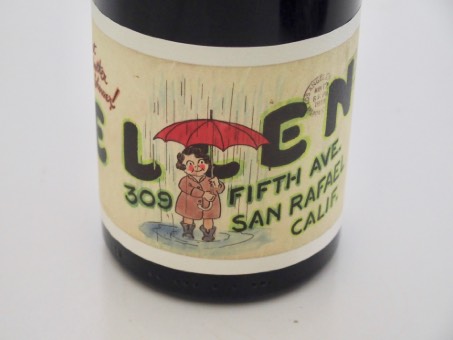 2018 Ellen Redding Stubbs Vineyard Marin County Pinot Noir 13.9% alc., 180 cases, $42. Each vintage label displays a colorful envelope that tells the story of Joseph Dennis McNeil and Ellen Josephine Redding who communicated through the mail leading up to their wedding in 1928 at St.Mary’s Church in Nicasio, CA. Joe drew and hand-colored pictures and notes on envelopes that he mailed to his fiancee and these whimsical designs are incorporated on Ellen Redding Pinot Noir labels. · Moderately dark garnet color in the glass. Enticing aromas of wild strawberry and black cherry. Lovely flavors of black cherry, strawberry, and spice enter with intent and strive for exuberance on the finish. Mid-weight plus in style, with a comforting mouthfeel, a noticeable fullness on the palate, and impressive harmony. This wine grabs your attention with tenacity. The very cool labels, the story behind the wine offered by winemaker Patrick McNeil, and the reasonable price all add to the pleasure in the bottle. Score: 94
Note: Patrick McNeil, the owner and winemaker of Ellen Redding Pinot Noir as well as producer of other wines under the “Wines that Deliver” umbrella was featured in the February 22, 2021 issue of 'edible Marin & Wine Country’. His connections to the historic village of Nicasio extend back generations. Nicasio, located in Marin County has a population of 71 (2019) but has a long history of pioneering ranchers and entrepreneurs. Patrick lived on the historic Stag’s Leap property in Napa Valley that his late attorney father, Joseph McNeil, had purchased in a partnership with Carl Doumani in 1970. Growing up, Patrick spent summers and holidays visiting Redding Ranch, his family’s hereditary property in Nicasio Valley. Today, Patrick, his wife, Amy, and their young son Joseph, all live in Nicasio. Patrick’s paternal grandmother was Ellen Redding McNeil and she lived on the Nicasio ranch after her husband died. Today, Patrick and his family own the restored 1890s structure that housed Redding & Sons, Ellen Redding’s grandfather’s butcher shop. Patrick sources fruit from Marin County vineyards and personally delivers his wines to customers who live locally. Visit www.winesthatdeliver.com.
2019 Lucia Santa Lucia Highlands Pinot Noir 14.1% alc., 1,60 cases, $45. Grown, produced and bottled by The Pisoni Family, Rohnert Park, CA. Sourced from Pisoni, Garys’ and Soberanes vineyards. Native yeast fermentation. Aged 11 months in French oak barrels, 40% new. · Moderately dark garnet color in the glass. Pleasing scents of black cherry, baking spice, and graham lead off. An easygoing, mid-weight style, with a nuanced palate of purple berries, purple grape, spice, licorice, and toasty oak. Respectable harmony with minimal tannins and some finish. A delightful AVA wine. Score: 91
2019 Lucia Soberanes Vineyard Santa Lucia Highlands Pinot Noir 14.1% alc., 410 cases, $70. Vineyard is located adjacent Garys’ Vineyard. Native yeast fermentation. Aged 11 months in French oak barrels, 40% new. · Dark garnet color in the glass. Reserved, but pleasant aromas of purple and black berries and peat. Full-bodied in a fruit-driven style with a core of grape jam, boysenberry, blackberry fruit flavors. A flood of fruit goodness embellishes the mid-palate and the modestly long finish. There is a compliment of tannin that supports the fruit load nicely. Score: 92
2019 Lucia Garys’ Vineyard Santa Lucia Highlands Pinot Noir 14.2% alc., $70. · Dark garnet color in the glass. The aromas of blackberries, spiced black cherries, and cold brew draw you in. Mid-weight plus in style featuring an array of dark red and black fruits that show considerable purity and charm. An inviting backbone of tannin creates a seamless balance. Impressive polish and finish. The vivid fruit longs for a protein accompaniment. Score: 93
2019 Morgan Twelve Clones Santa Lucia Highlands Pinot Noir 14.2% alc.,pH 3.51, TA 0.59, $35. Produced and bottled by Morgan Winery, Salinas, CA. 67% from Double L Vineyard. 100% de-stemmed. Aged 9 months in French oak barrels, 33% new. · Moderately light garnet color in the glass. Very nicely perfumed with scents of black cherry, strawberry, spice, and savory herbs. Light to mid-weight in style with a delicious core of giving strawberry, raspberry, and cherry flavors. Silky in the mouth, with appealing fitness, minimal tannins, and a compliment of barrel magic. Elegant and giving and ideal as a daily drinker. Score: 92
2018 Open Claim Vineyards Willamette Valley Pinot Noir 14.2% alc., pH 3.51, 216 cases, $75. Produced and bottled by Open Claim Vineyards, Carlton, OR. Clones are 33% Wädenswil, 33% 777, 22% 943 and 12% 667. Winemaker is veteran Tony Rynders. · Dark garnet color in the glass. I have extensive notes on this impressively “gutsy” Pinot Noir. Alluring aromas of Pinot Noir must, blackberry and sandalwood. A flood of well-ripened dark fruits exhibit exceptional length on entry, the mid-palate, and the dreamy finish. A power-packed, mid-weight plus styled Pinot Noir that is yet light on its feet with well-matched tannins. The fruit in this wine really wakes up the palate. Not all flash, this wine is easy to drink and is good for the long haul in the cellar. Still vivid and satisfying when tasted the following day from a previously opened bottled. In Pinot veritas. Score: 95
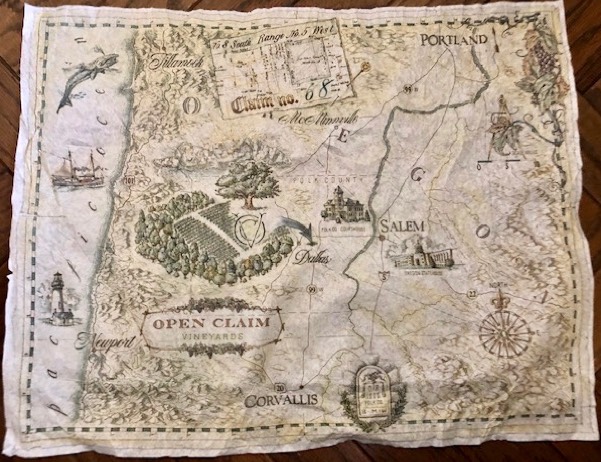 Note: The Open Claim Pinot Noir came wrapped in tissue paper printed with a map of Oregon showing the location of Open Claim Vineyard (see photo). This is an ingenious and classy presentation. Brett and Marnie Wall established Open Claim Vineyards in 2012 to grow Pinot Noir and Chardonnay on their 21-acre vineyard located near Dallas, Oregon. The area is part of the new Mount Pisgah AVA. The name, Open Claim, honors the history of the property which can be traced back to Parcel #68 of the Donation Land Claim Act of 1850. The vineyard is planted to eight Pinot Noir clones and selections including Pommard, Wädenswil, Dijon 115, 667, 777 and 943, “Coury clone,” and a La Tache selection. Noted winemaker Tony Rynders crafts the wines that have been highly acclaimed. Visit www.openclaimvineyards.com.
2018 Waxwing Deerheart Vineyard Santa Cruz Mountains Pinot Noir 14.7% alc., $48. Produced and bottled by Waxwing Cellars, Sonoma, CA. · Moderately dark garnet color in the glass. Complex nose exhibiting aromas of black cherry, underbrush, fern, and cedar-inspired oak. The mid-weight essence of spiced black cherry is appealing on the palate. There is but a hint of oak backing. The wine picks up length and intensity on the finish over time in the glass. The slightest alcoholic warmth shows up on the lips as the wine warms up. Score: 91
Dr. David Bruce, A California Pinot Noir Icon, Passes Away
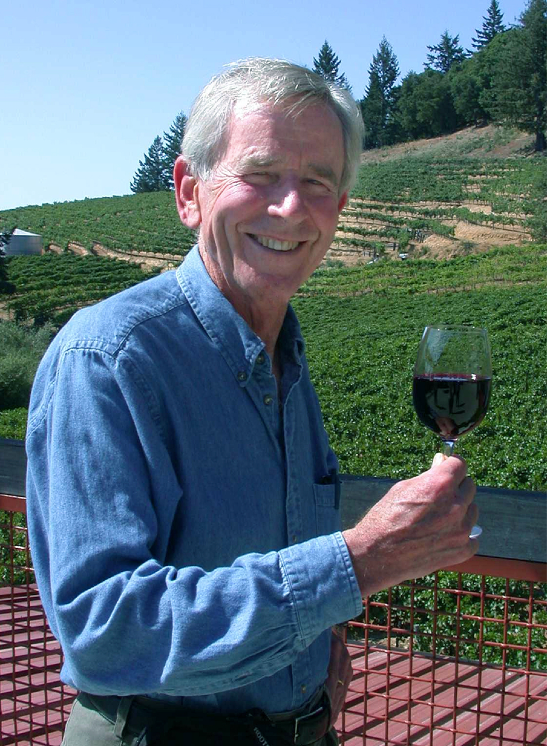
Dr. David H. Bruce, who recently celebrated six decades as a winemaker, passed away at the age of 89 years on April 28, 2021. When his name is brought up, thoughts turn to someone that had a true passion for wine and winemaking. Those who enjoyed drinking wine with him reveal that he was “a joy to be with.” I met David on a few occasions, visited his winery, and wrote about him in past issues of the PinotFile. I did not know him well personally but as I recently delved into his history I became fascinated by his life story and accomplishments. David was one of California’s pioneering winemakers whose combination of scientific curiosity and innovative spirit led him to become one of the first to craft credible Pinot Noir in California. When I wrote about him in 2013 in an article titled “California Pinot Noir Doctors,” his legacy had been firmly established. I last saw him at both the 2009 World of Pinot Noir celebration and the 2009 Pinot Noir Summit. Viticulturist Mark Greenspan, noted in the June 2011 issue of Wine Business Monthly that he had worked with Bruce’s vineyards since 2006 and found him still active, serving as executive winemaker at his eponymous winery, and holding weekly tastings with his staff. Greenspan remarked, “David Bruce did Pinot before Pinot was cool.”
Planting the SeedDavid was born in San Francisco in 1931 to a teetotaler family that raised him in Palo Alto. He had two brothers that died at young ages and his father, a physicist, was rarely home. His mother raised him and eventually married Fritz Roth, one of the three founders of the Palo Alto Clinic. She ran the medical laboratory at Palo Alto Hospital and David recalled that his mother had aspirations of becoming a doctor but raising a family took precedent. David would remember, “I suppose I had an obligation there, or at least, I felt that way.” David attended Palo Alto High School and split his three college years, studying pre-med at the University of Nevada in 1949, Stanford University in 1950 (the same year as his first marriage), and UC Berkeley where he graduated in 1951. He then entered Stanford Medical School in 1953 where he received his training at Stanford Lane Hospital in San Francisco. After obtaining his medical degree from Stanford University in 1956, he served his one-year internship at San Francisco County Hospital. David’s interest in wine was sparked by a happenstance meeting of Santa Cruz Mountains vintner Dan Wheeler while David was a student at Stanford Medical School. Dan owned a vineyard, winery, and wine cave, crafted wines under the Wines by Wheeler label, and had a humorous logo that read, “Work is the ruin of the drinking class.” David struck up a friendship and visited Dan at his winery where Dan introduced him to the many varieties of wine and shared his knowledge of winemaking. This experience planted the seed.
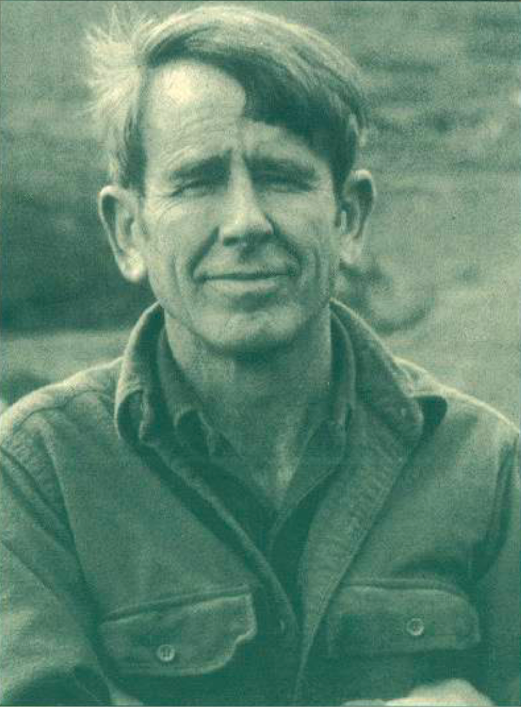 During medical school, David began reading books about wine and one in particular, Alexis Lichine’s Wines of France, was an important inspiration, and led to his wine epiphany. The book described the wines of Richebourg in Burgundy as “having a noble robe.” David decided he had to get a bottle and so he did from a retailer in San Francisco. It was a 1954 Domaine de la Romanée-Conti Richebourg (a Grand Cru) that set him back $7.50, a large sum for a bottle of wine at the time, especially for a poor medical student. David recalled, “The minute I opened this bottle of wine, I mean, the whole room was pervaded by this floral, spicy aroma. I remember thinking, I guess you get what you pay for. As I was drinking that wine with supper, I was imagining myself on top of some mountain, walking through a Pinot Noir vineyard and I was simply making the greatest Pinot Noir ever made." After graduating with a medical degree from Stanford University, David completed a dermatology residency from 1957 to 1960 at the University of Oregon Medical School Hospitals and Clinics in Portland. He crafted beer on several occasions while in Oregon and in 1959 acquired some Concord grapes to make wine. The wine was produced at his residence in an 11-gallon beer vat, pressed by hand, and fermented using bread yeast. The wine was “bad” initially, but some of it went thru malolactic fermentation and became palatable. Looking back, David thought that if Dick Erath and David Lett had started their Willamette Valley vineyards and winery earlier, he might have stayed in Oregon to make Pinot Noir. He realized that the Willamette Valley was an ideal area for growing Pinot Noir. After finishing his residency, he searched throughout California for vineyard property to grow Pinot Noir and tasted all the Pinot Noir he could obtain. David considered the Pinot Noir wines from Martin Ray in the Santa Cruz Mountains to be the best available at the time, and this impression combined with his familiarity with the Santa Cruz Mountains lured him back to that region.
Making the Great Pinot NoirIn 1961, while searching for a property in the Santa Cruz Mountains, he made 200 gallons of wine in the town of Soquel in the Santa Cruz Mountains. He found a 40-acre property on Bear Creek Road in Los Gatos planted to fruit and Christmas trees. It was an ideal location situated at 2,200 feet elevation with fine Hugo loam soil that provided excellent drainage. He cleared the land and planted 25 acres of vines. Because of the scarcity of cuttings at the time, it took 3 to 4 years to complete the planting of the estate vineyard. At the time David developed his vineyard, there were very few vineyards in the Santa Cruz Mountains and only Martin Ray was producing Pinot Noir in the region. David was captivated by the Pinot Noir wines of Martin Ray and considered them better than the wines of Domaine de la Romanée-Conti.
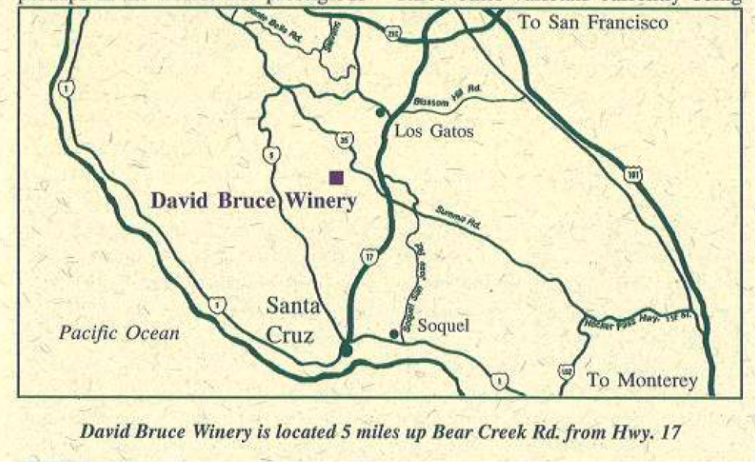 David decided to plant the four noble grapes: Pinot Noir, Cabernet Sauvignon, Chardonnay, and White Riesling. He later discovered that Cabernet Sauvignon would not ripen, and although the site was ideal for growing White Riesling, there was no consumer interest in that varietal. He obtained all four varieties from UC Davis Mother Plot Program that originated from Wente’s Arroyo Seco vineyard in the Salinas Valley. The Pinot Noir-certified clonal stock included Pommard, Martini, and Wädenswil. There is here-say that some of the cuttings came from Martin Ray’s vines other than those that would become certified as the Mt Eden clone (37). In the early 1960s, winegrowers were not particularly clone conscious, so Bruce would not have chosen a particular clonal type, only specifying some “Pinot Noir cuttings.” The photo below is of the David Bruce Estate Vineyard.
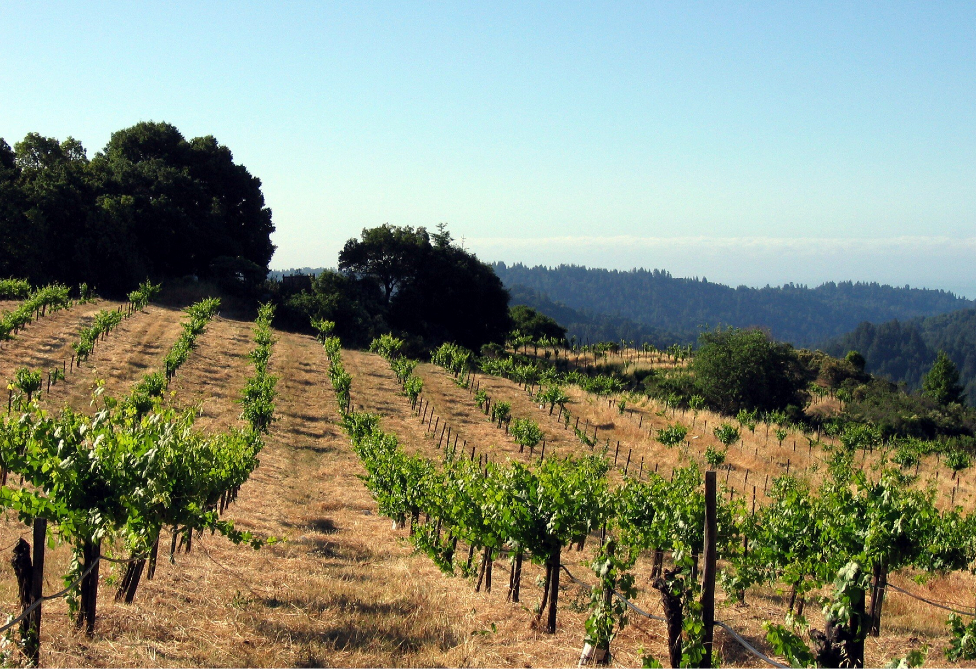 David launched his dermatology practice also in 1961 and would spend the following 22 years performing two full-time jobs (winery owner and winemaker at night and on weekends, and dermatologist during the day) until his retirement from part-time medical practice in 1983 and full-time practice in 1985. The income from his dermatology practice largely supported the winery financially through these years. His background in medicine helped him succeed as a self-taught winemaker. A winery was built on the site and was bonded in 1964. The first commercial release of David Bruce Pinot Noir came in 1966. Bruce bought another vineyard, previously owned by the Pesenti-Locatelli family, located in the Vine Hill subregion of the Santa Cruz Mountains in 1968. He pulled out the poorly-performing Zinfandel planted there and replanted the vineyard to the Wente clone of Pinot Noir on its own roots. Bruce Ken Burnap, a restaurateur from Southern California who had a passion for Burgundy, was impressed with the Pinot Noir produced from Bruce’s vineyard. Bruce was going through a divorce and need to sell some assets in order to buy his winery from his wife. He sold his 26-acre vineyard to Burnap in 1974, and Burnap renamed it the Santa Cruz Mountain Vineyard, a vineyard that achieved its own cult status among Pinot Noir aficionados over the years. Reportedly, he always regretted selling this vineyard. The 1960s saw David concentrate on wine produced from the estate vineyard and other Santa Cruz Mountains vineyards, The focus was on Zinfandel, but also Chardonnay, Traminer, and Grenache. The wines were crafted in a tiny building on the vineyard property that became the tasting room in 1968 when a second larger building was constructed to vinify the wines. Production was 2,500 to 5,000 cases annually, a sizable amount for one person. David’s early wines were uneven and he was to remark, “Pinot Noir is the ‘Dune’ of winemaking because so many things can go wrong. Pinot Noir is demanding. You need to read the science fiction novel 'Dune' to understand what I’m talking about.“ Still, he was making progress, and in 1968 began using a rotor-press and small French oak barrels for aging. David was continually experimenting with different wines from the beginning, and in 1964 was the first California winemaker to produce a White Zinfandel. He discontinued this wine in 1971, saying the wine was interesting but was something he didn’t “want to spend his life doing.” In 1969 he was one of the first to release Blanc de Blanc and Blanc de Noir sparkling wines. He also made a Pinot Noir Blanc that he considered pleasant but discontinued its production because he did not want to waste grapes on such an ordinary wine. The 1970s saw the addition of the first winemaker, Steve Miller, who came in 1972. It was a decade of reaching out and seeing what California wine grapes could do. Grape sources were expanded to eleven counties in California extending from Mendocino County to Southern California and included Amador, the San Joaquin Valley and even Temecula. The winery became best known for Chardonnay and his 1973 Santa Cruz Mountains Chardonnay was one of twelve California entries to participate in the famous 1976 Judgment of Paris. Although his Chardonnay finished last in that judging, he gained redemption in a re-enactment in 1993 at the International Wine Exposition in Chicago where wines were submitted by the same French and American wineries and the David Bruce 1991 Estate Chardonnay came out on top ahead of a $900 Batard Montrachet. David produced a number of “late harvest” Chardonnays that were late picks but not particularly high in alcohol. A small amount of late harvest sweet Zinfandels were also made from 1972-1978. He lost interest eventually in these high-alcohol, port-style Zinfandel wines and was to concentrate in the 1980s on “food wines” that fit the definition of great wines.
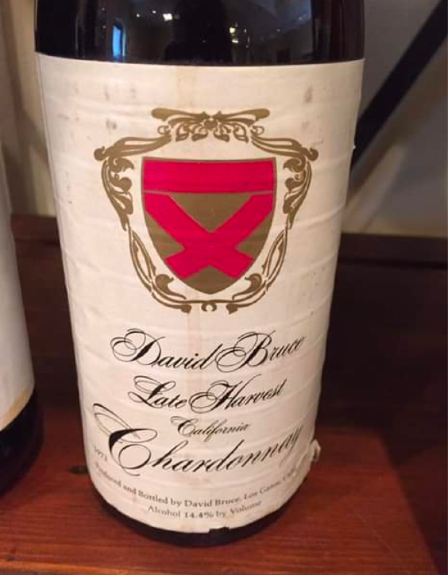 A two-week trip to Burgundy was the highlight of 1977 and David initiated many winemaking techniques he learned such as bottling from barrel, the use of different cooperages for aging, and foot crushing of the cap. These approaches would prove key to the success of the wines of the 1980s. That trip also led him to become one of the first California winemakers to use whole berry fermentation and whole cluster fermentation for Pinot Noir. David had often-recited problems with cork taint in 1978 cost him $2 million in lost business according to George Tabor writing in To Cork or Not to Cork. David reported in interviews that the loss was 7,200 cases of wine costing him $420,000. The problem ruined his Chardonnay reputation and market, but always the optimist, David remarked, It was a good thing in the long run for it forced me to do something which would have been very difficult to do in any other circumstance. That is, to go to all red wines. The 1980s were marked by fine-tuning of the winemaking program and a better understanding of the chemistry of Pinot Noir. With David’s attention focused on Pinot Noir, he would remark, “Any winemaker worth his salt wants to make the great Pinot Noir.” David saw his Pinot Noir wines achieve widespread acclaim and he was easily selling out of the 30,000 cases of wine he was producing. He had begun foot crushing of the cap in 1981 and often invited visitors to join in. That same year, he initiated whole cluster ferments and part of the 1981 vintage was 100% whole cluster fermented. David abandoned late harvest wines and concentrated on Pinot Noir, Chardonnay, and Zinfandel wines that would drink nicely when young and also age well, or what he considered “great” wines. The Pinot Noir and Chardonnay were sourced from the Santa Cruz Mountains and the Zinfandel from several other wine regions.
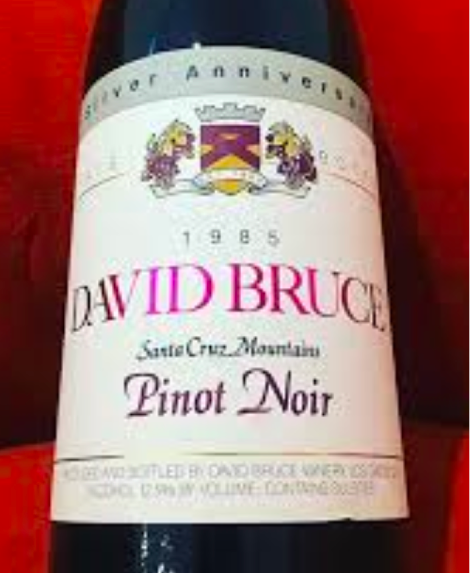 The magnitude 6.9 Loma Prieta earthquake on California’s Central Coast struck in 1989. Triggered by the San Andreas Fault, the epicenter was in the Santa Cruz Mountains. Fortunately, no one was in the winery when the earthquake struck leading to no injuries. The earthquake caused about $6 billion in damage and destroyed a number of Santa Cruz Mountain vineyards. The 1990s were notable for the destruction of the David Bruce Estate Vineyard. The blue-green sharpshooter brought Pierce’s Disease to the vineyard and by the end of 1992, all the Pinot Noir had been destroyed and by the end of 1993, all the Chardonnay was lost. The last Estate Pinot Noir produced from the original vines was in 1992. The Estate Pinot Noir program was resumed in 1996 after new plantings matured. The new plantings came from the Chalone and Noble Hill Vineyard in the Santa Cruz Mountains. These plantings had originally been established with cuttings from David Bruce’s estate vineyard. Essentially, David replanted with his own vine selection along with some mutated vines. There was a silver lining since the replanting offered the opportunity to install better trellising. The vines at the estate vineyard had been farmed as California spread or flop, a typical form of vine training when the vineyard was planted in the mid-1960s. David referred to it as “wild witches' hair.” The winery became serious about Petite Sirah (the winery spelled it Petite Syrah) in the 1990s. The winery had first made that varietal in 1970 but the vinification had been refined to reduce the tannins. It was essentially made in the same fashion as Pinot Noir so that it was a more accessible wine. It became widely popular and won many wine competition awards. David became involved in Petite Sirah symposiums organized by Jo Diaz for Louis Foppiano, and he was an early member and supporter of the ‘PS I Love You’ marketing organization. The winery took on much more debt to finance expansion throughout the 1990s. During this time, David took on more of a managerial and emeritus winemaking position. He hired an energetic and devoted team so he could focus on running his business. He relished having a brilliant team of four winemakers who had a special camaraderie coupled with a talent for crafting fine wine. One of Bruce’s strengths was that he enabled people around him to do their best with the assignments he gave them. This resulted in significant creative solutions to production issues and led to the best wines David Bruce Winery ever made. Winemaker Anthony (Tony) Craig began in 1991 and was joined by Ken Foster, Greg Stokes, and his wife Deborah Elissagaray. David would leave the winemaking team alone to seek out creative solutions to problems, refine the winemaking equipment, and upgrade vineyard management. Tony believes Bruce was having the time of his life. He left the winemaking staff alone to their own devices but eagerly joined the winemaking staff every Thursday morning for the weekly technical wine tasting to evaluate new wines and wines that were being considered for bottling. Bruce never imposed his will on which wine to bottle as the wines were always tasted blind and the top-scoring wine was the one that ended up being bottled. In addition, the winemaking team would taste many other producer’s wines for comparison. Tony told me, “It was joyous winemaking. These were the best wines ever made at David Bruce Winery and this period in time was one of the greatest moments in my life.” Bruce realized that by the early 1990s he was at a crossroads with the vineyard and winery. He had become mostly known for Chardonnay, Zinfandel, Petite Syrah, and several other varietals. When Tony, who was a winemaker at David Bruce Winery for twelve and a half years, asked David what he really wanted to be known for, he replied “Pinot Noir of course.” From that point on, the winery staff pushed him to source and plant more Pinot Noir wherever he could. This led to a planting contract with Tondré Alarid and his son Joe, well-known winegrowers in the Santa Lucia Highlands, and contracts with Warren Dutton of Dutton Ranch in Sonoma County. The winery was sourcing available Pinot Noir from all over California, and producing large quantities of appellation-designated and vineyard-designated Pinot Noir. Winery production expanded from 17,000 cases to 85,000 cases annually between the 1990s and early 2000s, most of which originated from Central Coast grapes. Still, the increasing popularity of Pinot Noir, driven by a Wine Spectator feature on California Pinot Noir that included David Bruce Winery, meant there was never enough Pinot Noir.
In the early 2000s, Jeanette, David’s spouse of 37 years, became president of the winery and assumed tight control of operations assisted by David’s sister-in-law Linda Hugger. Reportedly, David was disappointed at this juncture that his plans for expansion including opening tasting rooms in Northern California and the Central Coast never came to fruition. The entire winemaking team departed by 2003 over disagreements with management (against David’s wishes). The group included Anthony Craig who started his own label, Sonnet, and began making wine for Silver Mountain Vineyards and Tondré Wines, Ken Foster who left to become winemaker at Mahoney Vineyards, and Greg Stokes who left to make wine at Ursa Vineyards along with his winemaker spouse Deborah Elissagaray. The winemaker since 2004 has been Mitri Faravashi.
The LegacyThose who worked with Bruce at his winery said that he was extremely well versed in the basic science of winemaking. Michael Martella, the founding winemaker at Thomas Fogarty Winery in the Santa Cruz Mountains was a close friend. He told me, “He had a special passion for wine and winemaking, particularly Pinot Noir. We dined together often and he would include others who had an enthusiasm for wine. We would walk his vineyard together and chew on skins, discussing how much whole cluster to use in the next Pinot Noir. He was a joy to be with.” One of Bruce’s legacies will be the David Bruce “clone” of Pinot Noir. According to John Haeger’s North American Pinot Noir and personal communications with Haeger, the following came to light. There is no David Bruce FPS certified clone as it represents any number of Pinot Noir selections of underdetermined clonal and selection origins. The David Bruce clone lexicon became common parlance among winegrowers for cuttings taken from David Bruce’s plantings in the Santa Cruz Mountains or cuttings from other vineyards planted with David Bruce’s estate vineyard budwood. The proper term for any of these plantings should be David Bruce selection. For nearly 25 years, Bruce practiced dermatology while making wine at night and on weekends, eventually devoting himself exclusively to his winery and winemaking in 1985. Because of his medical background, Bruce was one of the first in the wine industry to extol the health virtues of drinking wine years before the 1991 appearance of the 60 Minutes television program on the French Paradox. Bruce published a booklet titled, Ten Little Known Medical Facts About Wine That You Should Know. He was one of the first doctors to publicize that resveratrol in red wine increased good cholesterol and reduced bad cholesterol. Bruce recommended that hospitals have wine on patient menus and encouraged a glass of wine daily for the elderly to improve their appetite and raise their self-esteem. He also tried to defuse the hysteria about sulfite allergies and elevated lead levels in wine.
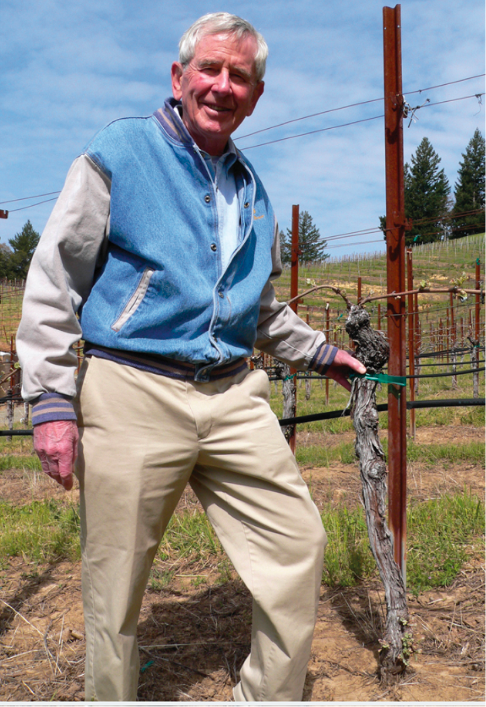 David is survived by four sons from his first marriage including Karli, Dana, Dale, and Barry, and several grandchildren. Dale was the only son to show a significant interest in wine. He planted his own vineyard, made wine, and spent two summers working for Jacques Seysses of Domaine Dujac. Still, he opted for other careers, saying about the winery business, “Too much work and you don’t make any money.”
A memorial is planned for June 6, 2021. Details are pending.
Credits: The David Bruce Winery: Oral history transcript: experimentation dedication and success, 2002, Regional Oral History Office, The Bancroft Library, University of California, Berkeley: www.archive.org/details/ davidbrucewinery00brucrich North American Pinot Noir, John Winthrop Haeger, 2004 Michael Martella, the founding winemaker of Thomas Fogarty Winery, retired Anthony Craig, former winemaker at David Bruce Winery, now winemaker for Sonnet, Tondré Wines, Silver Mountain Vineyards and Gali Vineyards Laura J. Ness, High-Performance Marketing, Wine Writing & Creative Consulting, Los Gatos, CA The Wine Press Newsletter, Gold Medal Wine Club, Santa Barbara, CA, January 1995 Wine Business Monthly, June 2011 Official obituary prepared by David Bruce's family Jo Diaz, Diaz Communications and PS I Love You, jo@diaz-commiunications.com
Wine BriefsPey-Marin Vineyards Closing According to a recent article in the San Francisco Chronicle (April 28, 2021), Pey-Marin Vineyards has ceased production after 21 vintages. Jonathan Pey, who founded Pey-Marin Vineyards and his late wife, Susan, were residents of Marin County and both were involved in the wine industry prior to launching their label in 1999. Growing wine grapes and in particular Pinot Noir in Marin County is not for the faint of heart. The few vineyards hold considerable potential when the weather cooperates, but small, even minuscule yields, are often the rule. Climate change has led to more drought years, stressing the often non-irrigated vines, resulting in very little wine to sell. Smoke from wildfires has also been a challenge. Early on, I thoroughly enjoyed many vintages beginning in 2002 of Pey-Marin Trois Files Pinot Noir (named after the Peys’ three daughters). This Pinot Noir was sourced from three vineyards in Marin County that Jonathan leased and farmed including Corda Vineyard, Stubbs Vineyard, and Kendric Vineyard. Pey-Marin Marin County Riesling was also a notable wine for the winery and the Riesling grapes could be more dependably farmed in Marin County. The Peys were an engaging and extremely friendly couple and I feel grateful that I spent some time with them and enjoyed their special wines. The website is www.scenicrootwinegrowers.com.
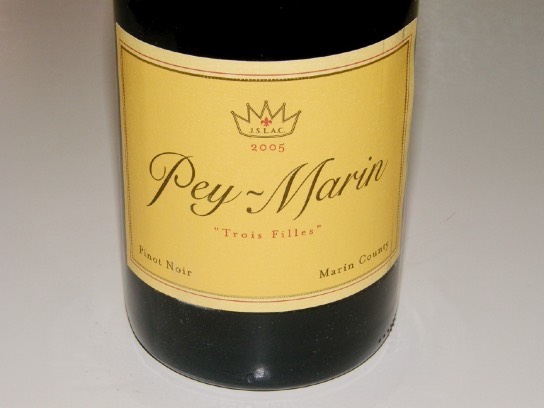 Wine Forger Rudy Kurniawan Deported from the US US Immigration and Customs Enforcement (ICE) announced in early April that Kurniawan was officially to be deported because “He is a public safety threat because of his aggravated felony conviction.” He was returned to Indonesia. Kurniawan had been in the US illegally since 2000 after violating his nonimmigrant student status. The fascinating story of how he forged many of the great wines of the world and duped experienced collectors who spent millions purchasing the unknowingly forged wines. The fascinating story was documented in both a book, In Vino Duplicitas, and a documentary. If you have not read the book, I highly recommend it. The French are Snapping up Premium US Wineries In April 2021 Bollinger Champagne bought Ponzi Vineyards, the first acquisition outside France for Bollinger. In 2020, the owners of Flora Springs sold their vineyard and winery to Bordeaux’s Chateau Smith Haut Lafitte and renamed it Cathiard Family Estate. Later in 2020, Diamond Creek Vineyards was acquired by Frédéric Rouzand, president of Maison Louis Roederer. He had previously acquired Merry Edwards Winery in 2019. In January 2021 the Faiveley family bought a stake in Williams Selyem. Silicon Valley Bank has reported that almost 50% of Napa and Sonoma wineries are considering selling in 2021. Ironman Triathlete Combines Drinking & Exercise In an article at www.insidehook.com on April 26, 2021, it was reported that Tom Lutz, who has participated in 14 Ironman triathlons. He swims, bikes, and runs nearly every day, and also has a family and runs a company. As he juggles many activities, he enjoys a glass of wine or an occasional cocktail. If the following day is a day off, he might have 2-3 glasses. He says, “Wine helps me relax and it helps me recharge.” He is a fan of Willamette Valley Pinot Noir. Tom has also created a wine stopper called “Repour” that keeps oxygen out of a wine bottle. The contents of the stopper act like an oxygen sponge to keep the wine inside fresh.
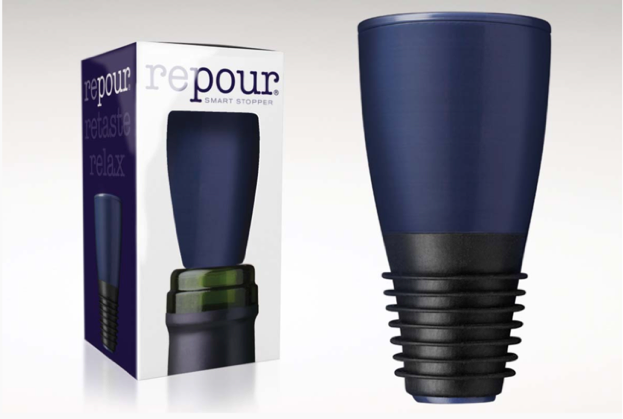 Thomas Rivers Brown Assumes Complete Ownership of Aston Estate An exclusive article at www.winespectator.com dated April 19, 2021, reports that Thomas Rivers Brown, who is best known for Napa Valley Cabernet Sauvignon but also has a fondness for Sonoma Coast Pinot Noir, plans to revitalize the Aston Estate brand he co-founded in 2001 with Fred Schrader and Chuck Sweeney. the sale includes the brand, inventory and 14 acres of Pinot Noir planted near Annapolis. Brown chose not to incorporate the grapes into his Rivers-Marie wines, preferring to aim for a successful standalone winery. The vineyard is planted solely to Dijon clones and the resultant Pinot Noir wines tend to have a big, structured style. Aston Estate currently has a 3,000-person mailing list but is not well known except for the most dedicated pinotphiles. Burgundy-Oregon Winery Nicolas-Jay Opens an Estate Tasting Room Nicolas-Jay, a partnership between Jean-Nicolas Méo of Burgundy’s Méo-Camuzet and visionary music entrepreneur Jay Boberg, has announced the opening of a new winery and tasting room in Newberg, Oregon. The tasting room is open to the public by appointment only Thursday through Monday ($40 per person waived with the purchase of three bottles or $150). Reservations are available at www.exploretok.com/nicolasjay. A converted barn on the 53-acre property now houses a winery, two temperature-controlled cellars, a tasting room, and a tasting deck offering 300-degree views of the location. The new winery represents something that Jean-Nicolas always wanted to build, using his learnings from his centuries’ old family Domaine in Vosne-Romanée, as well as seven vintages in the Willamette Valley.
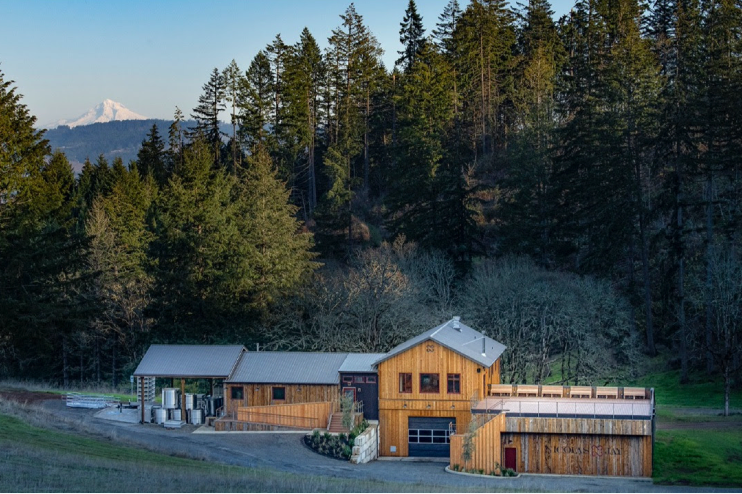 New Book on San Luis Obispo County Wine History Libbie Agran and Heather Muran have published San Luis Obispo Wine: A World-Class History. The book details the history from the 1700s to the present, representing the culmination of years of research that began when Agran founded the Wine History Project of San Luis Obispo in 2015. 208 pages, available in both hardcover and paperback.
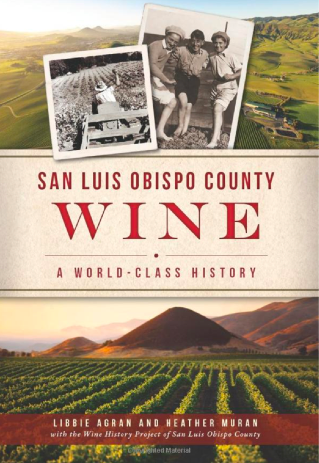 The Paso Robles Press published an excellent article on the wineries of Edna Valley and Arroyo Grande on April 18, 2021: https://pasoroblespress.com/lifestyle/paso-robles-wine-country/the-road-less-traveledwineries- of-edna-valley-arroyo-grande/. This comprehensive coverage was written by Mira Honeycutt, a resident of Paso Robles and a veteran wine journalist. Grape Pomace May Harbor Health Benefits Researchers at UC Davis are examining the potential for grape pomace to become a valuable health supplement. Because pomace disposal causes some environmental concerns, many attempts have been made to find a use for it. The researchers are teaming with Jackson Family wines and Sonomaceuticals to explore further the possibilities. Apparently, Chardonnay grape pomace was found to contain a high amount of oligosaccharides that have been shown to promote immune and intestinal health. It is an ingredient in breast milk that feeds a strain of bacteria in infants/ intestines that helps build immunity against illness. Read more at www.winespectator.com. or subscribe to Wine Spectator’s free Wine & Healthy Living email newsletter. 2020: A Disastrous Grape Harvest in the North Coast The North Bay Biz reports that the total number of tons and the average price of Northern California wine grapes was decimated. In Sonoma County, the amount of Chardonnay and Pinot Noir harvested was down 34 percent and 39 percent by volume and 4 percent and 20 percent by price, respectively. There was a multitude of reasons including an ongoing drought, a pandemic, and ravenous wildfires. Many growers are facing a cash crunch because the fruit they did sell brought a lower price and wineries canceled contracts due to poor sales during the pandemic. Urban Vineyard in San Francisco The Two Eighty Project 3.5-acre vineyard sits on a hillside overlooking Alemany Blvd and Interstate 280 in San Francisco. The goal is to cultivate rarely grown grapes, practice farming that can combat climate change, and offer local youths a place where careers in food and wine can be launched. Founders Jannea Tchirich and Christopher Renfro is growing Pinot Noir, Gamay and Grenache Blanc, but also Zwigelt and other unusual varieties. currently, the vineyard is planted to only a quarter of an acre and last year only yielded two bottles of wine. including non-vinifera species that are native to California shores. Pinot Noir had been planted here in 2013 but had been neglected for at least two years. the founders have reached out to noted viticulturist and winemaker Steve Matthiasson who has encouraged the project. Oregon’s Vidon Winery Names First Black Woman President Don and Vicki Hagge founded Vidon Vineyard in Newberg, Oregon. The winery produces about 2,000 cases of estate grown wine primarily Pinot Noir. They sold the brand and winery to Dru and Erin Allen in November 2020, including their 12.5-acre vineyard, a hillside tasting room, and winery in the Chehalem Mountains. The Allens have named Tiquette Bramlett the president of the Willamette Valley winery as an effort to increase diversity in the Oregon wine industry. She is thought to be the first Black woman appointed to oversee a winery in a major U.S. wine region. Top DTC Varietals Experienced Price declines in 2020
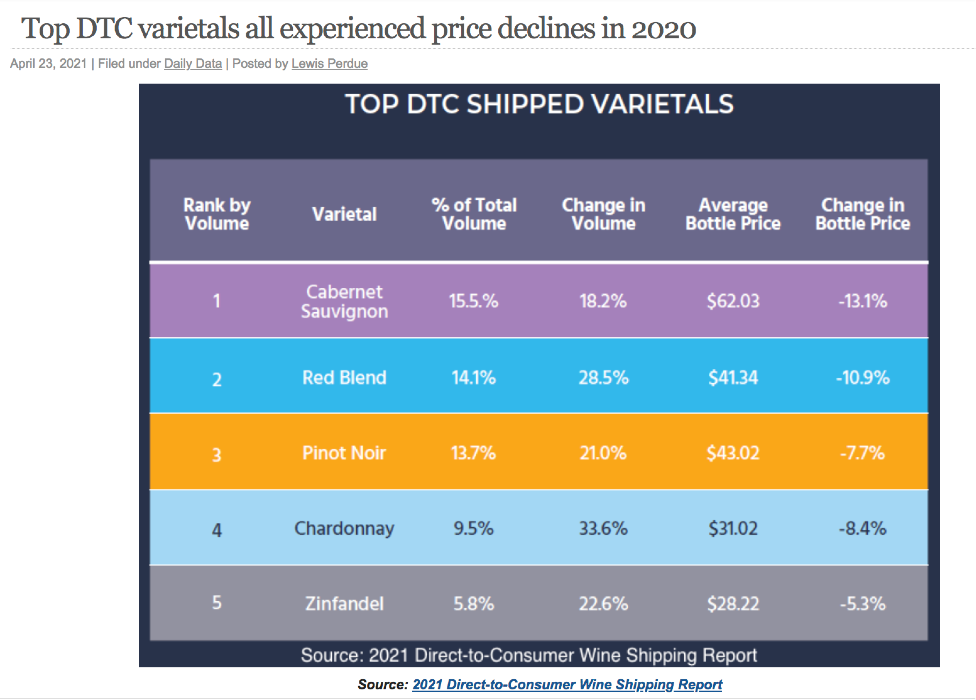 Western U.S. Likely Entering Its Most Severe Drought in History In 2000, the Western U.S. began a “megadrought” that is the second-worst in 1,2000 years due to a natural dry cycle and human-driven climate change. A report in www.cbsnews.com on April 12, 2021, predicts an escalation of extremely dry conditions this summer, with water restrictions and a dangerous fire season. In the West, and particularly the Southwest, the drought this summer and fall will be the most intense in recent history. The U.S. Drought Monitor places 60% of the Western states under severe, extreme, or exceptional drought. This past wet winter added to the concern as only 25 to 50% of normal rain fell in much of the Southwest and California. Over the past several decades, rainfall has been inconsistent and dry periods between rainstorms have increased in length. It is likely there will be unavoidable consequences to the winegrowing season and wine grape harvest in California in 2021. Old Vine Conference Series This is a global movement to nurture and value great old vines and their wines. The Old Vine Conference is intended to bring together the wine industry, and wine lovers to share best practices, agreed on definitions and implement new strategies from vineyard to glass. Ultimately, the hope is that healthy old vineyards will be valued and enduring within the commercial realities of the global wine industry. the first conference series is planned to run through 2021 in March, July, September, and November. Moderated discussions and interviews will explore different challenges and barriers preventing the regenerative profitability of high-quality old vines, and agreed on actions to address them around the world. The conferences will be presented online. Moderators will include esteemed communicators and journalists such as Sarah Abbott MW, Tim Atkin MW and Dr. Jamie Goode. To learn more about The Old Vine Conference and to register, visit www.oldvines.org. Chardonnay Shout-Out Two Chardonnays that I had the pleasure of drinking recently should receive a special commendation.
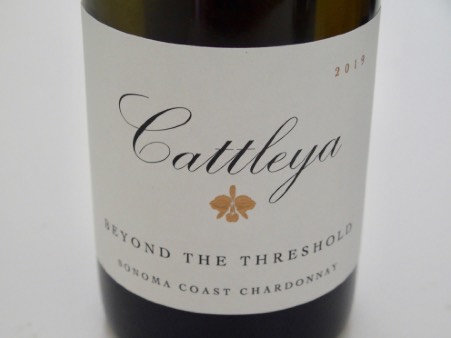 2019 Cattleya Beyond the Threshold Sonoma Coast Chardonnay 14.1% alc., 125 cases, $65. A single barrel selection of clone 95 from one vineyard site. Native primary and malolactic fermentation in 33% new French oak barrels. Aged 15 months, then bottled unfined and unfiltered. · A complete wine of superior breeding, offering the utmost in gratification. Easily one of the greatest California Chardonnays I have had in recent years. My wife loved it too. Score: 97
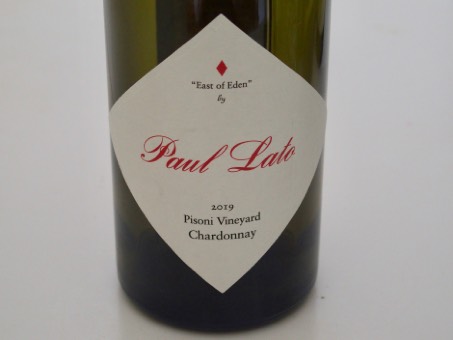 2019 Paul Lato “East of Eden” Pisoni Vineyard Santa Lucia Highlands Chardonnay 14.5% alc., $90. A marked contrast to the Cattleya bottling displaying more stone fruit richness and ripeness, yet still very polished and refined, offering. This is not a buttery, oak-driven voluptuous wine but rather one with elegant power and harmonious oak. Always my favorite among the excellent Chardonnays Paul crafts each year. I believe Paul is the only one to produce a Chardonnay from Pisoni Vineyard other than the Pisoni family. Score: 96
|